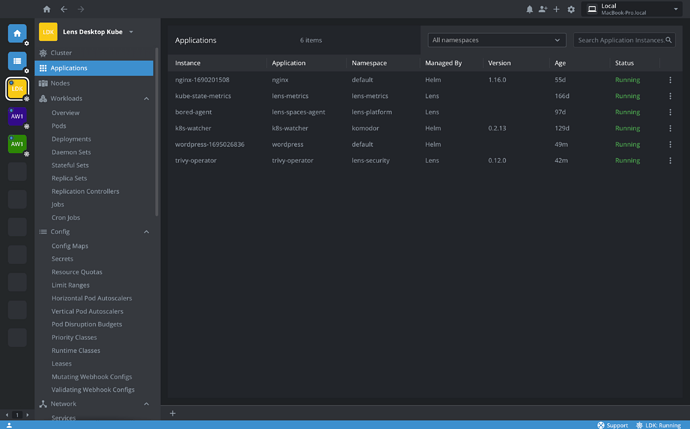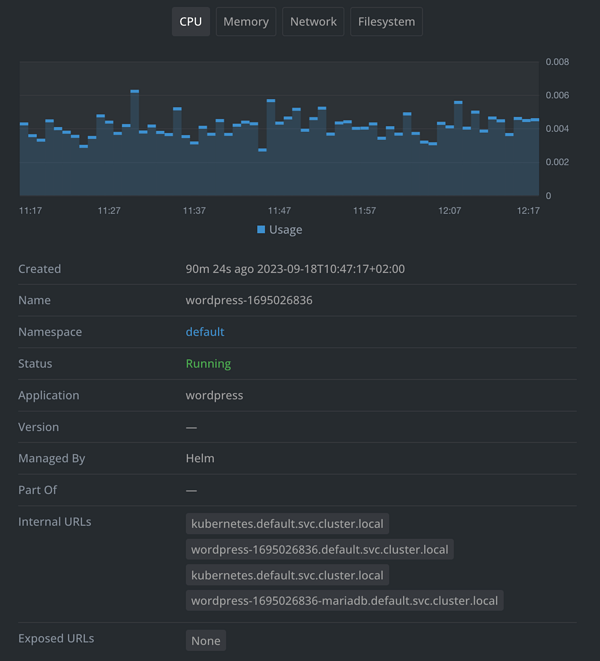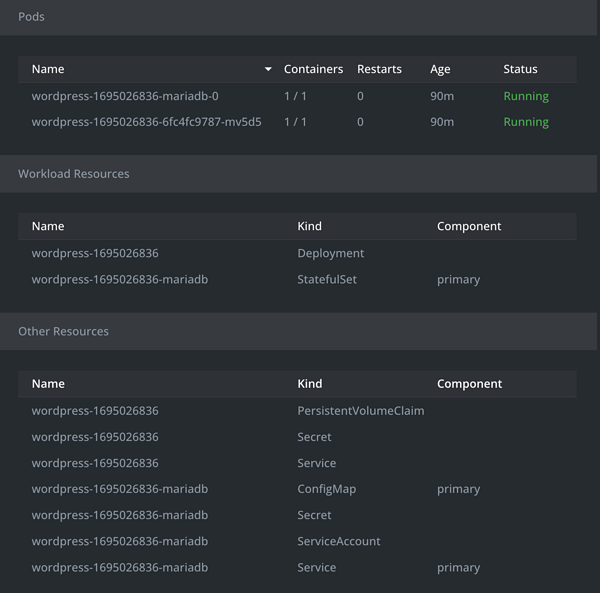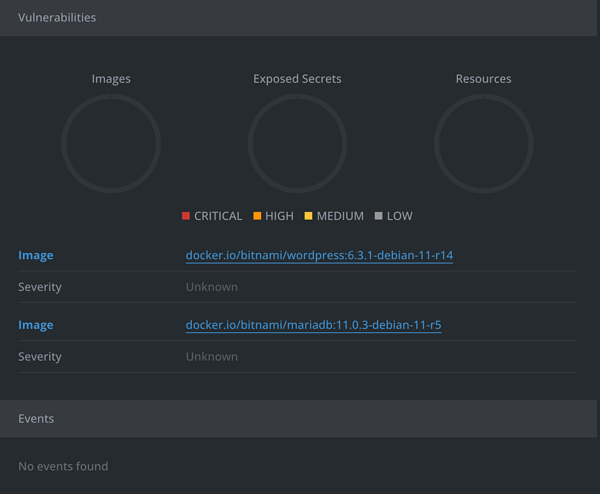Over a million users and tens-of-thousands of businesses develop and operate their Kubernetes on Lens. It is the largest and the most advanced Kubernetes platform in the world. It removes complexity, helps with developer onboarding and improves productivity. While Lens is already great for working with Kubernetes clusters on a daily basis, today we’re excited to bring you a whole new dimension of Lens aimed at helping developers discover and troubleshoot their applications.
Lens Applications View
When Kubernetes first stepped onto the tech stage, it brought with it a revolution in orchestrating containerized applications. However, with its expansive ecosystem and versatile resource types, it can be daunting to navigate and manage these resources effectively.
Kubernetes’ Recommended Labels
Recognizing this challenge, Kubernetes introduced a set of Recommended Labels that serve as a common set of annotations for applications. According to the official Kubernetes documentation, these labels were designed to facilitate effective querying and management of resources. They were introduced in Kubernetes 1.15 and have gained widespread adoption ever since.
These labels, such as app.kubernetes.io/name for application name, app.kubernetes.io/version for the current version, and app.kubernetes.io/component for the specific component, offer an organized way to keep track of each part of your application architecture. When you’re deploying services, jobs, or any other Kubernetes resource, these labels make it easy to identify related components. They also make life easier for both DevOps engineers and system administrators by offering a more streamlined, cohesive understanding of resource statuses, ownership, and roles.
Why does this matter? These standardized metadata tags lay the groundwork for smarter, more efficient Kubernetes management. They allow Lens to take Kubernetes resource management to the next level by offering features that allow you to visualize, discover, and troubleshoot your applications seamlessly. And that’s exactly what our latest feature aims to do!
Introducing Lens Applications View
Navigation in Lens Desktop is pretty straightforward. We follow the Kubernetes API structure of clusters, nodes, workloads, configs, network, storage, namespaces, etc. The Lens Desktop navigation tree provides a great way to understand the structure and organization of Kubernetes. But for some users, especially developers who might be less familiar with Kubernetes, even this tree can be daunting and complex. If you don’t know where to look for a log, or network port, volume, or secret for an application it can take some time digging through the different Kubernetes resources figuring out which ones relate to your application. Developers need a focused and streamlined view of their applications.
That’s why we’re excited to introduce “Applications”, a new view designed to simplify how you interact with running applications in your cluster based on these Kubernetes recommended labels. Think of it as your centralized command center for application health, performance, and security. Once you connect to a cluster, you can find Applications at the top level of the menu.
Application Details
Click on any application to explore in-depth details. In addition to familiar status and metrics, you’ll find information about its management, relationships, and any associated internal or external URLs.
You can also see what pods and resources an application contains.
Finally, see any vulnerabilities or events associated with an application.
Integration with New Lens AppIQ Cloud Service
While Lens Desktop already provides an incredibly user-friendly experience for Kubernetes management, we understand that cloud-native development doesn’t end there.
That’s why we’ve created Lens AppIQ, a cloud service that complements Lens Desktop by offering real-time intelligence and additional insights into the apps running on your Kubernetes clusters. This not only makes debugging, operation, and security easier but also opens up Kubernetes to a broader audience of developers who can benefit from streamlined processes without having to become Kubernetes experts. Both solutions can work independently, yet they are most powerful when used together. Learn more about Lens AppIQ!
Important Update to Lens Terms of Service
We value the trust you place in us, and we’re committed to safeguarding your data and providing you with the best service possible. That’s why we are making updates to our Terms of Service. These changes will take effect on September 19, 2023.
Why We’re Updating
-
Clarification: We’ve clarified the language to make our terms more understandable, reducing potential for misunderstandings.
-
Security: To ensure the services we provide are safe and secure, we’ve added new security protocols and guidelines.
-
Compliance: As part of our commitment to global best practices, the new terms also align with various regulations, including those coming from the EU.
-
Lens AppIQ Cloud Service: We’re excited to announce the Lens AppIQ service, and the updated terms will include guidelines regarding this new offering.
What You Need to Know
-
The updated Terms of Service will become effective on September 19, 2023.
-
By using any Lens Services or Software after this date, you will be agreeing to these updated terms.
-
The complete, revised Terms of Service can be read here.
We invite you to read through these updated terms and contact us through our Help Center if you have any questions or concerns. Your continuous support and trust are important to us, and we’re always here to help.
Lens Security Center Features
- Added resizable columns to the Security Center overview table.
- Added ability to export CSV files of images, resources, and roles.
Performance improvements
- Improved overall performance by loading objects from the kubernetes API in smaller chunks.
- Improved performance in Lens Security Center for large clusters.
Bug Fixes
- Render correct checkbox state in tables
- Make base font size a bit smaller
- Converted zero bytes correctly for metrics
- Check status of fetch in Kubectl.downloadKubectl()
- Created workload tab in the extension API
- Show latest value for HelmReleases when the release secrets update
- Display share menu only on mac
- Make overview status bg color consistent
- Trivy resource updates in Security Center
- Reword exposed secrets not scanned tooltip in Security Center
- WSL profile edit mount toggle value for Lens Desktop Kube
About Lens
Lens is the way the world runs Kubernetes. It’s lowering the barrier of entry for people just getting started and radically improving productivity for people with more experience. Users of Lens gain clarity on how their clusters and cloud native software stacks work. It helps people to put things in perspective and to make sense of it all.
Tens-of-thousands of businesses and hundreds of thousands of users develop and operate their cloud native workloads on Lens. It is built on open source, has 20.6k stars on GitHub, and is backed by a number of Kubernetes and cloud-native ecosystem pioneers. Lens is the largest and most advanced Kubernetes platform in the world.
Learn more about Lens in our documentation.




